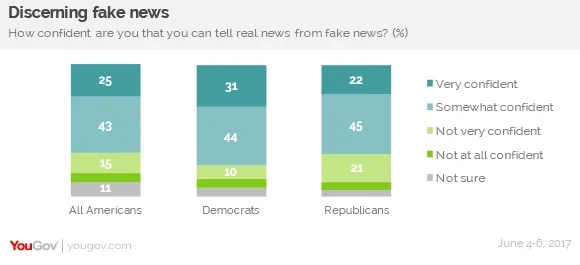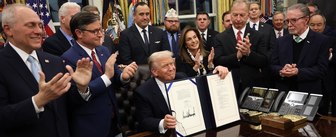1 in 4 US adults are very confident that they can tell real news from fake news
What’s “fake news?” Often, just a report people don’t like. And that’s how a majority believe President Trump uses the term. The President’s fascination with the term “fake news” was demonstrated by his tweets over Memorial Day weekend, and he continued to refer to “fake news” Tuesday.
Those tweets get negative scores in the YouGov Tweet Index. But 53% of the public in the latest Economist/YouGov Poll believe that the President is using that term not because he believes the information isn’t true, but because he just doesn’t like what’s being reported.
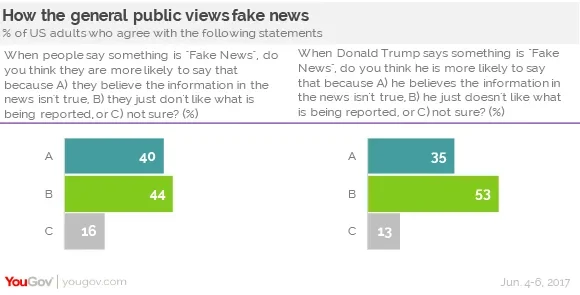
In the most recent poll, a random half of the public was asked what people in general mean when they use the term “fake news,” while the other half was asked what they believe the President means. Americans are more likely to give Americans overall the benefit of the doubt, as nearly as many overall think people in general doubt the information as just dislike it. Independents and Democrats also see a difference between the public and the President in their understanding of “fake news.” But Republicans are as likely to credit the President’s belief that the information really is false as they are to credit the public overall.
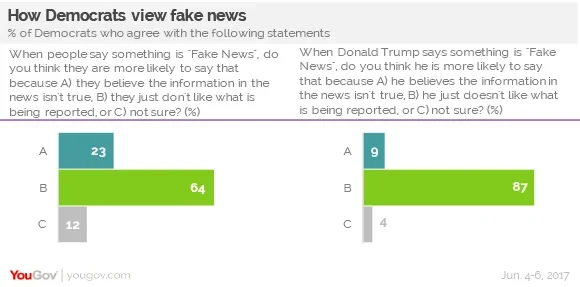
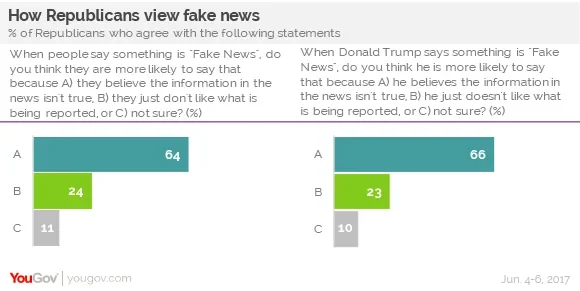
Still, nearly one in four Republicans say Mr. Trump uses the term “fake news” simply to refer to something he doesn’t like.
Most Americans are confident they can tell when something is “fake news,” though Republicans are ten points more likely than Democrats to say they aren’t all that confident they can tell the difference. The most confident group – the 25% who are “very confident” they can tell the difference between real news and fake news – are the most likely to believe there was Russian hacking during the election and the least likely to think that millions of illegal votes were cast in November 2016.
